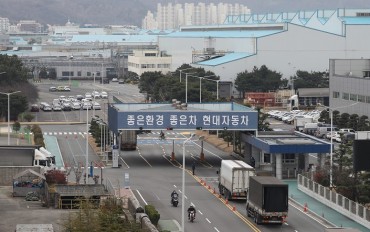
A municipal government in Seoul has installed an underground monitoring system that feeds data in real time to a command center, which will help city officials stay one step ahead of dangers like sinkholes. (Image: Seongdong District)
SEOUL, Dec. 5 (Korea Bizwire) – A municipal government in Seoul has installed an underground monitoring system that feeds data in real time to a command center, which will help city officials prevent dangers like sinkholes — a road hazard frequently linked to underground infrastructural problems.
The local government in question is in Seongdong District, located in northeast Seoul. In partnership with the Electronics and Telecommunications Research Institute, the district installed an “Underground Safety Monitoring System” that covers a radius of 500 square meters underneath Wangsimni Square.
By placing sensors and recording devices in or near underground water supply lines, sewage pipes, subway tunnels and groundwater wells, district workers no longer have to go underground to check the status of public utilities systems.

The district has created in 3D a map of the maze of pipes and tunnels that make up Wangsimni’s underground infrastructure. (Image: Seongdong District)
A member at the district office said, “Below Wangsimni Station is the Seoul Metro line, sewage pipes and water supply lines, not to mention the light rail station that is being planned, which made [Wangsimni Station] an appropriate choice for installing the Underground Safety Monitoring System.”
Wangsimni Station is the core of Seongdong District and a major transportation hub. Seoul Metro Lines 2 and 5, the Bundang Line and the Gyeongui-Jungang Line pass through the Wangsimni area.
The district has created in 3D a map of the maze of pipes and tunnels that make up Wangsimni’s underground infrastructure.

Based on the indices, areas underground will either be colored green (stable), yellow (possibility of risk) and grey (rapid course of action recommended) on the screen in the command center. (Image: Seongdong District)
Ten sensors, twelve monitoring and measuring devices employ IoT technology to feed raw data into the main system, which inputs the information received and derives a “risk index”.
Based on the indices, areas underground will either be colored green (stable), yellow (possibility of risk) and grey (rapid course of action recommended) on the screen in the command center.
Should a problem be detected in sewage or water supply systems, the system is designed to raise a warning in the command center and to automatically notify the maintenance manager via mobile phone and e-mail.

Should a problem be detected in sewage or water supply systems, the system is designed to set off an alarm in the command center and to automatically notify the maintenance manager via mobile phone and e-mail. (Image: Seongdong District)
As sinkholes are generally a byproduct of complications with underground water supply systems, the monitoring equipment in place should be highly effective in warning of impending danger.
The command center’s main screen will display close-up looks at the water mains, while technology that measure groundwater levels and gathers data on the Seoul Metro Line 2 from Wangsimni Station to Hanyang University Station has been set in place. Water that enters the subway tunnels will also be measured and tested for level of pollutants, volume and quality.
The location of the sensors will be changed periodically to maximize their scope. Seongdong District will look to replicate its system in other areas within its jurisdiction.
The Head of the Seongdong District Office said, “As public anxiety continues to mount over the threat to safety posed by problems with underground systems, [the district] has installed the nation’s first “Futuristic Urban Safety Management System” and put the district residents’ minds at ease.”
S.B.W. (sbw266@koreabizwire.com)






